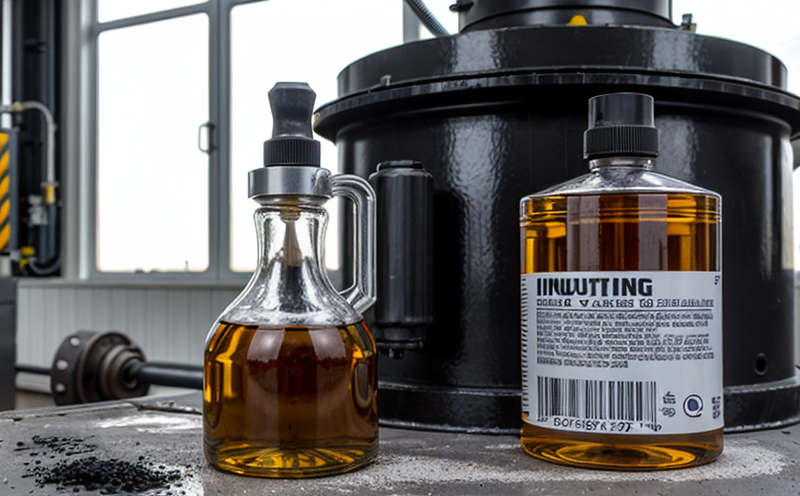EN ISO 10370 Carbon Residue Testing in Oils
The EN ISO 10370 standard provides a precise methodology for determining the carbon residue of lubricating oils. This test is crucial for assessing the quality and potential wear properties of industrial oils, which are used in various sectors including manufacturing, automotive, and aviation.
Carbon content is an important indicator of oil degradation due to oxidation or thermal decomposition. Higher carbon residues indicate higher levels of combustion products within the oil, suggesting that the oil has lost some of its performance capabilities over time. This can lead to increased friction, wear, and reduced efficiency in machinery. By monitoring this parameter, manufacturers and end-users can ensure optimal performance and longevity of their equipment.
The test procedure involves heating a sample of the lubricating oil under specific conditions to 500°C (932°F) for 1 hour. During this period, any carbonaceous material present in the oil is converted into a solid residue. This residue's mass percentage relative to the original sample weight indicates the level of carbon content.
This testing method is particularly vital for industrial lubricants where prolonged operation under high temperatures can lead to significant degradation. For instance, in heavy machinery like engines or turbines, maintaining optimal conditions through regular monitoring ensures reliable performance and extends operational life. Regular carbon residue testing helps identify when it's time for oil replacement, thereby preventing costly downtime and maintenance issues.
Our lab adheres strictly to the EN ISO 10370 standard, ensuring accurate results that are consistent with industry best practices. This commitment translates into reliable data which can be used by clients to make informed decisions about their lubricant selection and usage strategies.
The importance of this test cannot be overstated; it plays a key role in maintaining the integrity of industrial oils across all sectors. By understanding carbon residue levels, stakeholders gain valuable insights into how well their current practices are supporting equipment longevity and efficiency.
Scope and Methodology
| Parameter | Description |
|---|---|
| Sample Preparation | The sample should be representative of the batch or type of oil being tested. It is recommended to use a minimum of 10 grams. |
| Heating Conditions | The sample must be heated to exactly 500°C (932°F) for precisely one hour under controlled atmosphere conditions. |
| Residue Measurement | After cooling, the residue is carefully weighed and expressed as a percentage of the original sample mass. |
The accuracy of these measurements directly impacts the reliability of the results. Our laboratory uses state-of-the-art equipment to ensure that every step adheres strictly to ISO standards, providing clients with confidence in our findings.
Eurolab Advantages
- Comprehensive Expertise: Our team comprises seasoned professionals with extensive experience in industrial lubricant testing.
- ISO Compliance: We maintain strict adherence to all relevant international standards, including EN ISO 10370 for carbon residue tests.
- Advanced Equipment: Utilizing cutting-edge technology ensures precise and repeatable test results.
- Timely Reporting: Results are provided promptly after completion of the testing cycle, enabling swift decision-making processes.
By leveraging these advantages, Eurolab offers unparalleled service quality that meets or exceeds industry expectations. We pride ourselves on delivering not just accurate data but also actionable insights that contribute significantly to our clients' success.
Environmental and Sustainability Contributions
- Resource Efficiency: By accurately identifying when oils need replacement, we help minimize waste and extend the useful life of lubricants.
- Emissions Reduction: Monitoring carbon content helps prevent excessive wear that could otherwise increase emissions from machinery.
- Cost Savings: Early detection of degradation leads to cost-effective maintenance schedules rather than reactive repairs.
- Regulatory Compliance: Adherence to stringent testing protocols ensures compliance with environmental regulations and best practices.
Our commitment to sustainability extends beyond just this particular service. We continuously strive to integrate eco-friendly practices into all aspects of our operations, contributing positively to both the environment and society at large.





